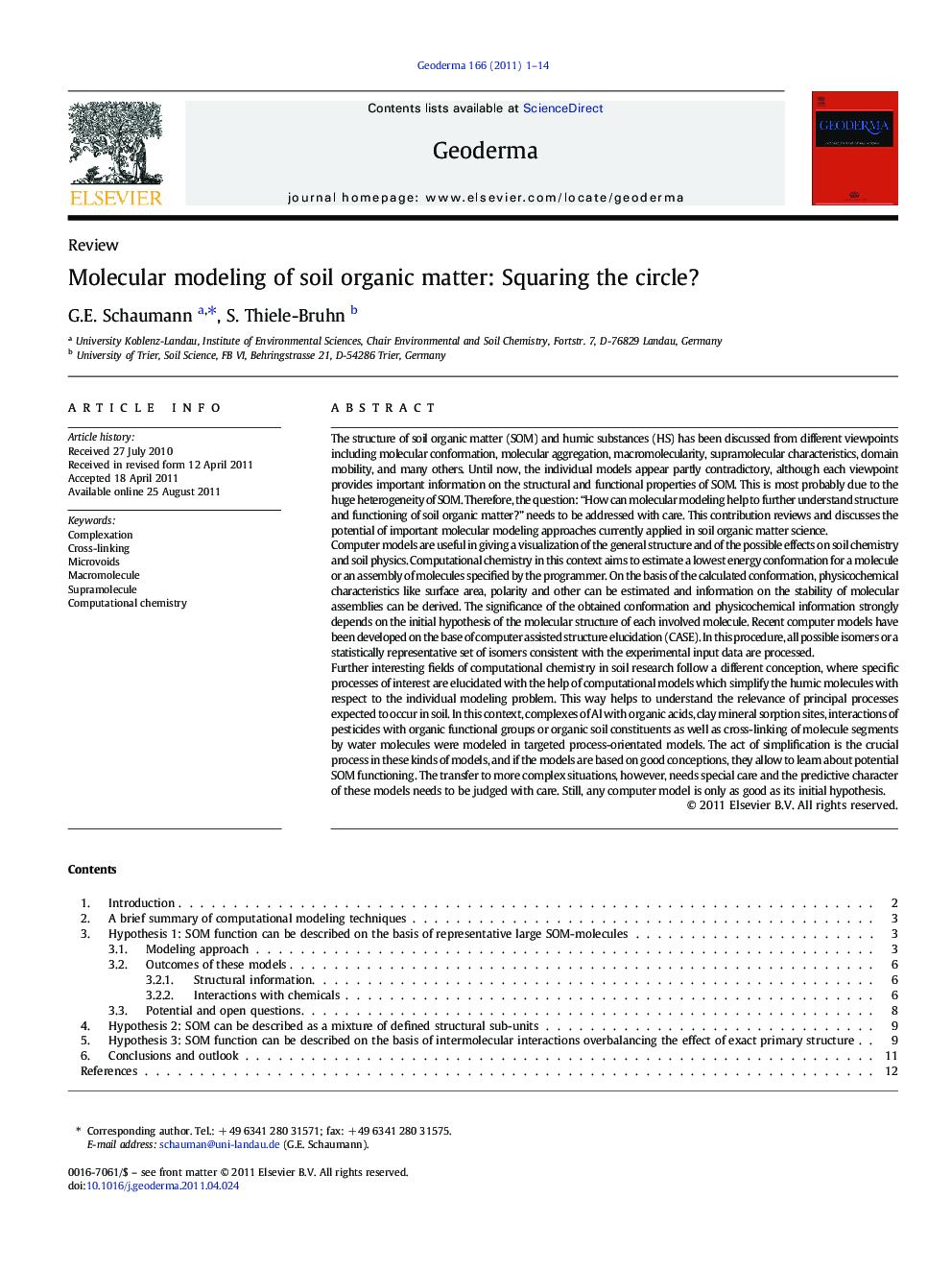| Article ID | Journal | Published Year | Pages | File Type |
|---|---|---|---|---|
| 4574051 | Geoderma | 2011 | 14 Pages |
The structure of soil organic matter (SOM) and humic substances (HS) has been discussed from different viewpoints including molecular conformation, molecular aggregation, macromolecularity, supramolecular characteristics, domain mobility, and many others. Until now, the individual models appear partly contradictory, although each viewpoint provides important information on the structural and functional properties of SOM. This is most probably due to the huge heterogeneity of SOM. Therefore, the question: “How can molecular modeling help to further understand structure and functioning of soil organic matter?” needs to be addressed with care. This contribution reviews and discusses the potential of important molecular modeling approaches currently applied in soil organic matter science.Computer models are useful in giving a visualization of the general structure and of the possible effects on soil chemistry and soil physics. Computational chemistry in this context aims to estimate a lowest energy conformation for a molecule or an assembly of molecules specified by the programmer. On the basis of the calculated conformation, physicochemical characteristics like surface area, polarity and other can be estimated and information on the stability of molecular assemblies can be derived. The significance of the obtained conformation and physicochemical information strongly depends on the initial hypothesis of the molecular structure of each involved molecule. Recent computer models have been developed on the base of computer assisted structure elucidation (CASE). In this procedure, all possible isomers or a statistically representative set of isomers consistent with the experimental input data are processed.Further interesting fields of computational chemistry in soil research follow a different conception, where specific processes of interest are elucidated with the help of computational models which simplify the humic molecules with respect to the individual modeling problem. This way helps to understand the relevance of principal processes expected to occur in soil. In this context, complexes of Al with organic acids, clay mineral sorption sites, interactions of pesticides with organic functional groups or organic soil constituents as well as cross-linking of molecule segments by water molecules were modeled in targeted process-orientated models. The act of simplification is the crucial process in these kinds of models, and if the models are based on good conceptions, they allow to learn about potential SOM functioning. The transfer to more complex situations, however, needs special care and the predictive character of these models needs to be judged with care. Still, any computer model is only as good as its initial hypothesis.
► Computational chemistry gives versatile information on soil organic matter. ► SOM models address molecules, molecular mixtures or intermolecular interactions. ► Simplification requires balance between exactness of computation and of structure. ► Challenge 1: the transition to structured and heterogeneous surfaces and matrixes. ► Challenge 2: quantitatively link modeling results with material and experiments.
